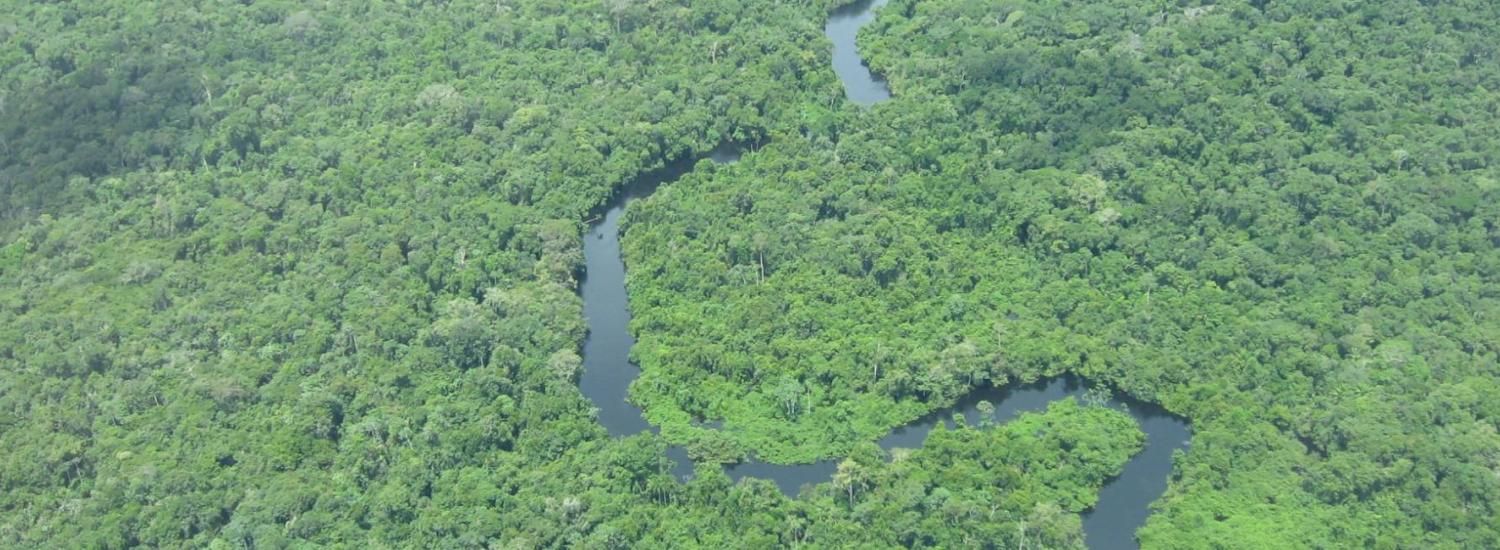Amazonian Drought Conditions Add Carbon Dioxide to the Atmosphere
International study combines aircraft and ground data to measure the “breath” of the Amazon forest

This is a joint press release of NOAA's Cooperative Institute for Research in Environmental Sciences (CIRES), the University of Leeds, Instituto de Pesquisas energeticas e Nucleares (IPEN), the University of Oxford and the University of Colorado Boulder.
As climates change, the lush tropical ecosystems of the Amazon Basin may release more of the greenhouse gas carbon dioxide into the atmosphere than they absorb, according to a new study published Feb. 6 in Nature.
An international team of scientists found that the amount of yearly rainfall was the driving factor behind the amount of carbon dioxide (CO2) taken up and released from Amazonia in 2010 and 2011. During a wet year, the Amazon forests were roughly carbon-neutral: Forests “inhaled” more carbon dioxide than they “exhaled,” but biomass burning, which releases carbon dioxide, compensated for the difference. In contrast, during a very dry year forest growth stalled and biomass burning increased, resulting in the region “exhaling” substantial amounts of carbon dioxide to the atmosphere.
“Amazonia is changing: We are observing more very wet years and more very dry years,” said John Miller, one of three lead authors on the new paper, and a scientist with NOAA’s Cooperative Institute for Research in Environmental Sciences (CIRES) at the University of Colorado Boulder. “If these trends continue, the region may become a net source of carbon to the atmosphere, moving carbon embedded in ecosystems into the atmosphere as greenhouse gas, thus accelerating global warming.”
Until now, scientists have struggled to measure the carbon balance of Amazonia, which stores enormous amounts of carbon in its thick forests and masses of leaves. Scientists have been eager to understand how climate change could influence the regional balance of processes that send carbon dioxide into the atmosphere (fires, decomposition, respiration) and pull it out of the air (photosynthesis). Global observations cannot sense the “breath” of tropical continental regions, and ground studies cannot sample the vast Amazon Basin.
The international scientists – led by Miller, Emanuel Gloor from the University of Leeds, and Luciana Gatti from the Instituto de Pesquisas Energeticas e Nucleares – used aircraft to collect air samples between the surface and 14,500 feet (4.4 kilometers) above four sites across Amazonia, every other week for two years. They then analyzed this air with high-precision carbon dioxide and carbon monoxide sensors. Carbon monoxide is a product of biomass burning.
The concentrations of the gases—and the changes in those concentrations as air masses traveled over the Amazon Basin from the Atlantic to the Andes—provided the basis for the first carbon budget estimate of the entire Amazon Basin.
The study also relied on ground observations of carbon dynamics in forests, coordinated by researchers at the University of Oxford.
Both years of the study had similarly high temperatures, but very different precipitation and biomass burning patterns: 2010 was extremely dry, 2011 wet. The team discovered that in dry 2010, fires released roughly two-thirds more carbon into the atmosphere than during the wet 2011 (0.5 vs. 0.3 petagrams, or 500 million metric tons vs. 300 million), since drought conditions in the Amazon tend to increase fire severity, and fires release carbon stored in trees into the atmosphere.
Overall, during the dry 2010, the team found that two processes made the Amazon Basin a net source of carbon for the atmosphere. The billowing smoke from fires “exhaled” large quantities of carbon, and drought-stressed Amazonian vegetation “inhaled” relatively small amounts of carbon due to depressed photosynthesis as shown by ground plot data.
In 2011, by contrast, fewer fires and relatively stronger plant growth meant less carbon dioxide was sent into the atmosphere and more was absorbed by growing plants. However, the region did not take up and store more carbon than it sent into the atmosphere. Rather, the Amazon was carbon-neutral, neither adding nor removing carbon from the atmosphere.
“We know that the Amazon undergoes a warming trend similar to the rest of the globe. There is also an increase in both droughts and severe floods,” said Emanuel Gloor, co-lead author on the new paper and a professor at the University of Leeds. “It is unclear how the Amazon forests will change in the future. For the first time we have observed the Basin-wide carbon balance during a very dry and a wet year, which gives us an indication of what changes to expect.
Gatti said the team wanted to continue the aircraft-based measurements over the Amazon Basin. “We need to understand how sensitive these ecosystems are to climate change and the potential for feedbacks that could further affect our climate,” she said. “A longer-term effort will be needed to fully understand the future carbon balance of the region.”
CIRES is a partnership of NOAA and CU Boulder.
Download high-resolution images here.
Luciana Gatti (Instituto de Pesquisas Energeticas e Nucleares in Sao Paulo, Brazil); Emanuel Gloor (University of Leeds) and John Miller (CIRES scientist working in NOAA’s Earth System Research Laboratories) are lead authors of the paper, “Drought sensitivity of Amazonian carbon balance revealed by atmospheric measurements,” published in Nature, on Feb. 6, 2014.